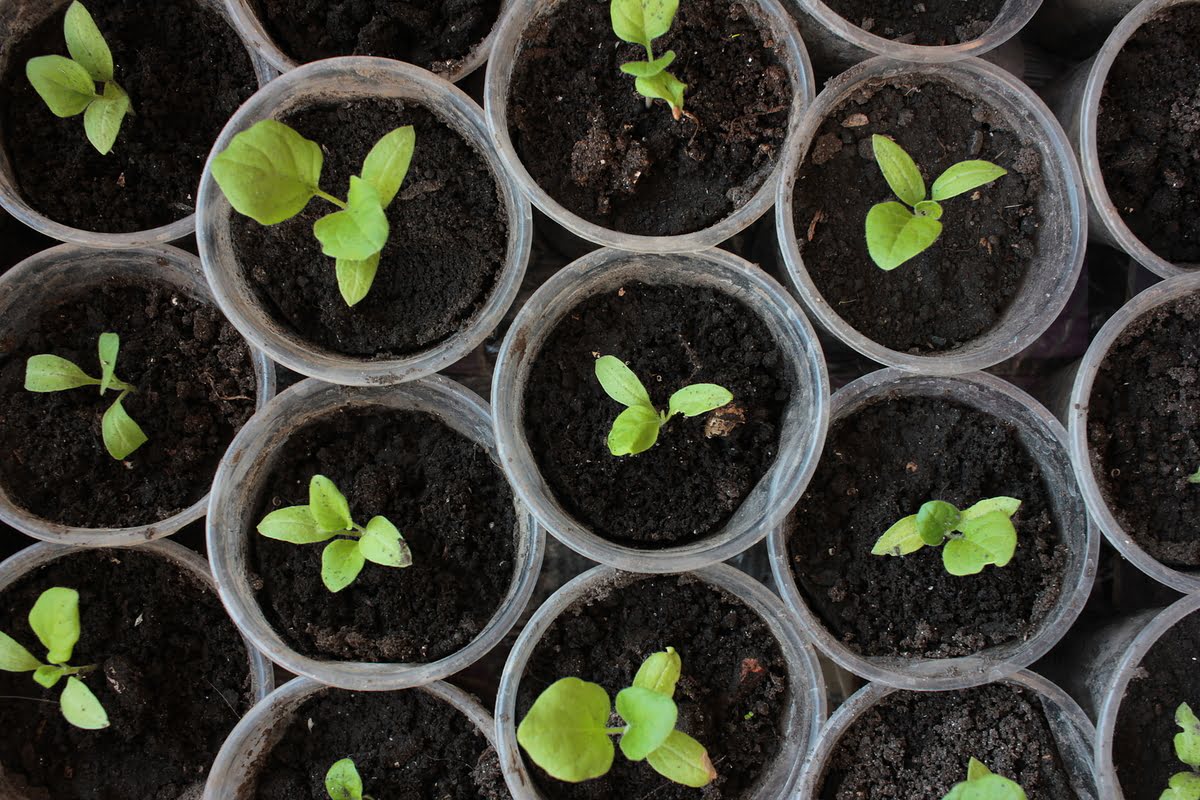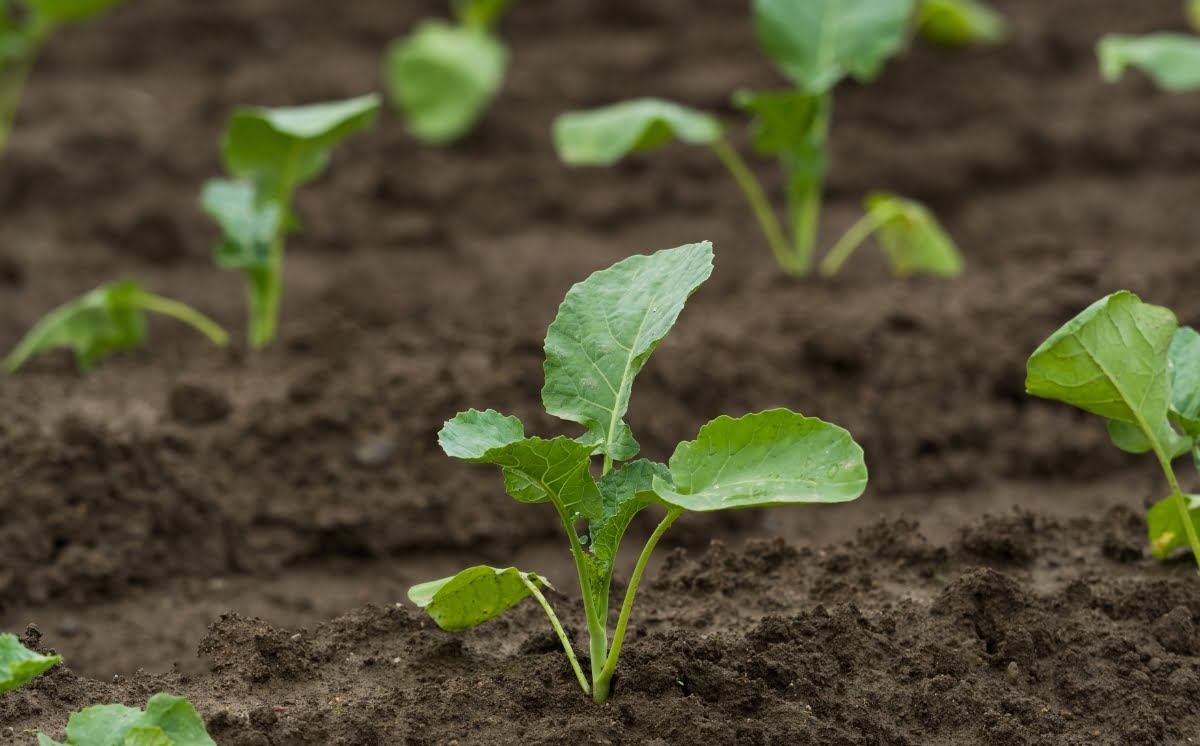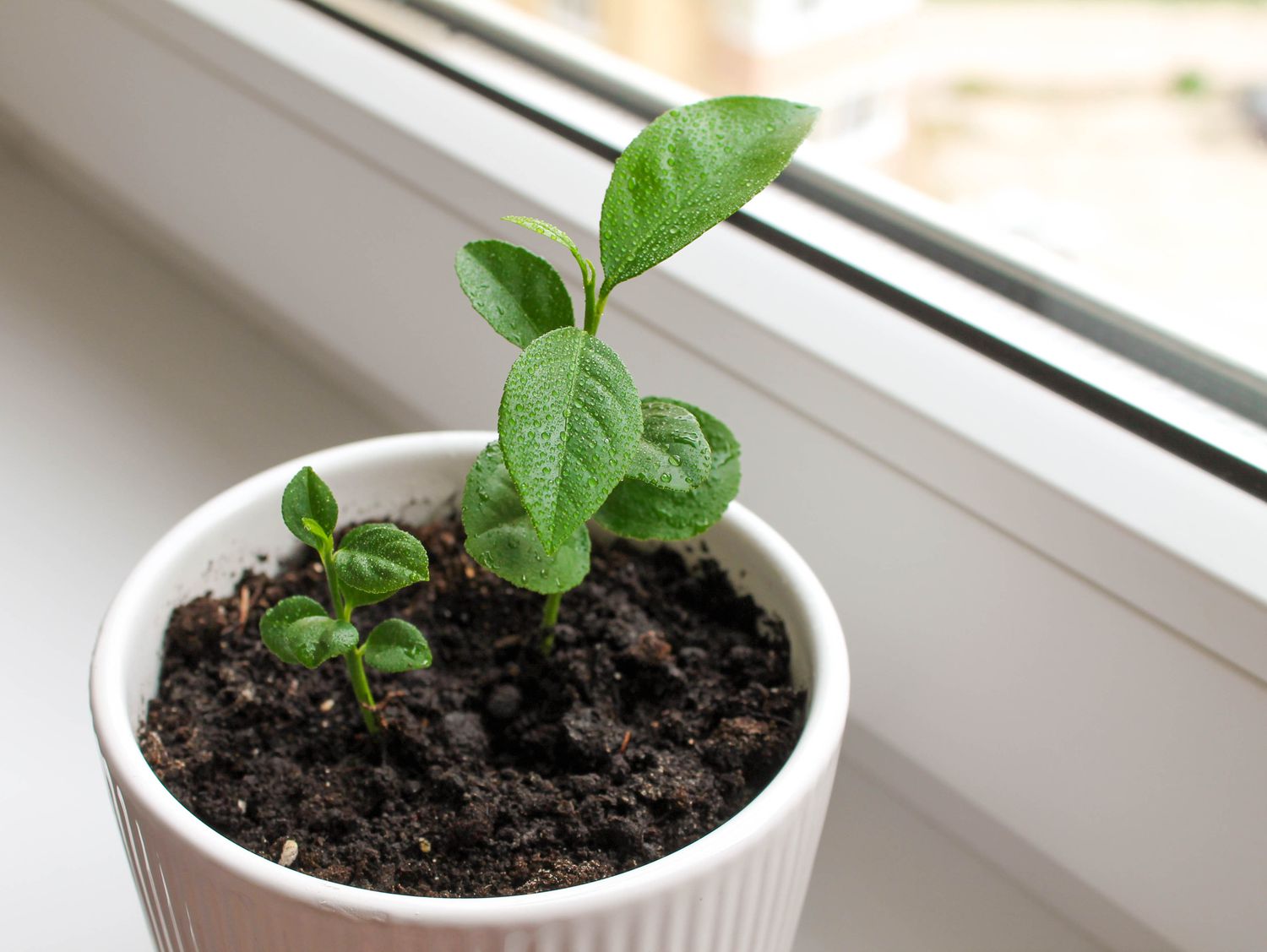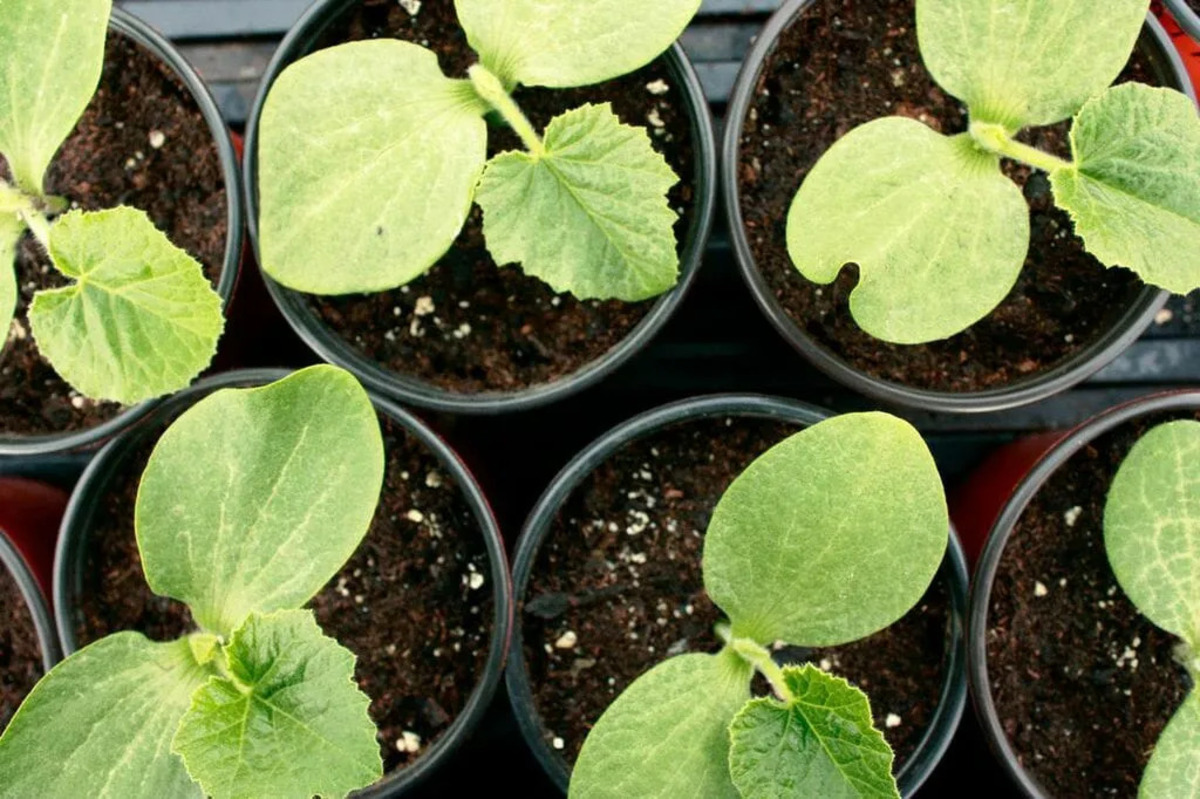Home>Types of Gardening>Edible Gardening>When To Transplant Lettuce Seedlings Outside


Edible Gardening
When To Transplant Lettuce Seedlings Outside
Published: January 5, 2024
Learn the perfect timing to transplant your lettuce seedlings outdoors for a successful edible gardening experience. Discover expert tips and techniques for optimum growth.
(Many of the links in this article redirect to a specific reviewed product. Your purchase of these products through affiliate links helps to generate commission for Chicagolandgardening.com, at no extra cost. Learn more)
Table of Contents
Introduction
Welcome to the world of edible gardening! If you’re an avid gardener or simply interested in growing your own food, then edible gardening is a fantastic way to get started. One delicious and versatile plant to include in your garden is lettuce. Lettuce is a cool-season crop that can be grown in various climates and harvested early for fresh, crisp salads.
Transplanting lettuce seedlings from indoors to the outdoor garden is a crucial step in ensuring their successful growth. However, timing is key to ensure that the seedlings thrive in their new environment.
In this article, we will explore the ideal transplanting time for lettuce seedlings and discuss important considerations to ensure a successful transplant. We will also cover the steps to prepare the planting bed and provide essential care tips for transplanted seedlings. By the end of this article, you’ll have the knowledge and confidence to successfully transplant your lettuce seedlings and enjoy a bountiful harvest.
Ideal Transplanting Time for Lettuce Seedlings
Choosing the right time to transplant lettuce seedlings is crucial for their survival and growth. Lettuce is a cool-season crop that prefers mild temperatures, so it’s important to consider the climate and weather conditions in your area.
The ideal time to transplant lettuce seedlings outdoors is when the soil temperature is consistently between 40°F (4.4°C) and 60°F (15.6°C). This typically falls in early spring or late fall, depending on your location. Lettuce thrives in cooler temperatures, and transplanting too early or too late may result in the seedlings bolting or struggling to establish themselves.
It’s important to be aware of your local climate and frost dates to determine the best transplanting time. In regions with mild winters, you may opt for fall transplanting for a late-season harvest. In colder climates, it’s best to wait until spring when the risk of frost has passed.
Another factor to consider is the variety of lettuce you’re growing. Different lettuce varieties have different temperature preferences. For example, loose-leaf lettuces are generally more tolerant of heat than head lettuces. Consult the seed packet or do some research to understand the specific temperature preferences of the lettuce variety you’re growing.
Keep in mind that it’s better to wait until the ideal transplanting time than to rush the process. Transplanting lettuce seedlings too early into cold or overly wet soil can lead to stress, disease, or even death. Patience is key when it comes to successful lettuce transplanting.
Temperature Considerations
Temperature is a critical factor to consider when transplanting lettuce seedlings. Lettuce is a cool-season crop that prefers temperatures between 45°F (7°C) and 75°F (24°C). It thrives in mild conditions, making it an excellent choice for early spring and fall planting.
When transplanting lettuce seedlings, it’s important to monitor both daytime and nighttime temperatures. Daytime temperatures above 75°F (24°C) can cause lettuce to bolt, resulting in bitter-tasting leaves and reduced yield. Similarly, nighttime temperatures below 45°F (7°C) can stress the seedlings and hinder their growth.
If the temperatures in your area regularly exceed 75°F (24°C) during the day, consider providing some shade for the lettuce seedlings. This can be achieved by placing a shade cloth or using a temporary cover to shield the plants from the direct sun during the hottest part of the day.
In colder climates, you may need to protect the lettuce seedlings from freezing temperatures. Consider using row covers or cloches to provide additional insulation and protect the young plants from frost. Alternatively, you can delay transplanting until the weather warms up to avoid any potential damage.
Monitoring the temperatures and making adjustments to protect your lettuce seedlings will help ensure a successful transplant and promote healthy growth.
Establishing Seedlings Indoors
Before transplanting lettuce seedlings outdoors, it’s common practice to start them indoors to give them a head start and ensure a strong and healthy start. Here are the steps for establishing lettuce seedlings indoors:
- Choose the right container and growing medium: Use seed trays or small pots with drainage holes. Fill them with a high-quality seed starting mix that provides adequate moisture and nutrients for the seedlings.
- Sow the seeds: Follow the instructions on the seed packet regarding sowing depth and spacing. Generally, lettuce seeds should be planted about ¼ inch (0.6 cm) deep, with a spacing of about 1 inch (2.5 cm) between seeds.
- Provide optimal conditions: Place the seed trays or pots in a warm location with ample sunlight or under grow lights. Maintain a consistent temperature of around 70°F (21°C) for optimal germination. Keep the soil evenly moist but not soggy.
- Monitor and thin: Once the seeds have germinated and the seedlings have a few sets of true leaves, thin them out to provide enough space for each plant to grow. Remove the weaker seedlings, allowing only the strongest ones to continue growing.
- Fertilize: Feed the lettuce seedlings with a diluted, balanced fertilizer once they have established themselves and are actively growing. Follow the instructions on the fertilizer packaging for proper dilution and application.
Establishing lettuce seedlings indoors allows you to control the growing conditions and ensure their strong and healthy development before transplanting them outdoors. It also extends the growing season, enabling you to enjoy fresh lettuce earlier in the year.
Hardening Off Process
Before transplanting lettuce seedlings from indoors to the outdoor garden, it’s essential to acclimate them gradually to the outdoor environment. This process, known as hardening off, helps the seedlings adjust to the changes in temperature, wind, and sunlight they’ll encounter in the garden. Here’s how to harden off lettuce seedlings:
- Start slowly: Begin the hardening off process when the weather is consistently mild and frost is no longer a concern. Choose a sheltered outdoor area such as a porch or patio where the seedlings are partially shaded from direct sunlight and protected from strong winds.
- Gradually expose to outdoor conditions: On the first day, place the seedlings outdoors for only a few hours, gradually increasing the time each day over the course of one to two weeks. Start with morning or late afternoon exposure when the sun is less intense.
- Protect from extreme conditions: If there’s a sudden cold snap or heavy rain, bring the seedlings back indoors or provide temporary protection using cloches or row covers. Avoid exposing them to harsh conditions that could stress or damage the plants.
- Monitor watering: Check the soil moisture regularly and water as needed to prevent the seedlings from drying out. Be mindful not to overwater, as soggy soil can lead to root rot. As the seedlings adjust to the outdoor environment, gradually reduce watering frequency.
- Observe for signs of stress: During the hardening off period, keep a close eye on the seedlings for any signs of stress, such as wilting or yellowing leaves. If you notice any issues, adjust the exposure time or provide extra protection until the seedlings become more resilient.
By gradually exposing lettuce seedlings to outdoor conditions through the hardening off process, you’ll help them adapt and strengthen, increasing their chances of survival and successful growth in the garden.
Selecting a Suitable Transplanting Location
Choosing the right location for transplanting your lettuce seedlings is crucial for their growth and productivity. Here are some factors to consider when selecting a suitable transplanting location:
- Sunlight: Lettuce thrives in partial shade or filtered sunlight, especially in areas with hot summers. Look for a location that receives 4-6 hours of sunlight per day. If you live in a warmer climate, consider a spot with morning sun and afternoon shade to protect the lettuce from intense midday heat.
- Soil quality: Lettuce prefers loose, well-draining soil rich in organic matter. Avoid compacted or clayey soil that retains water, as it can lead to root rot. Work compost or well-rotted manure into the soil before transplanting to improve its fertility and drainage.
- Proximity to water source: Choose a location near a water source, as lettuce requires consistent moisture to grow well. Being able to easily access and water the plants will help ensure their vitality and reduce stress.
- Protection from wind: Lettuce seedlings are delicate and can be easily damaged by strong winds. Select a location that provides some natural wind protection, such as a fence, buildings, or taller plants, or consider using temporary barriers like mesh screens or windbreaks.
- Space availability: Consider the space requirements of your lettuce variety. Leaf lettuce can be planted closer together, while head lettuce needs more space to grow and form large heads. Ensure that there is enough space between each transplant to allow for proper air circulation and growth.
Additionally, think about the convenience of the transplanting location. Taking into account factors such as accessibility, proximity to other garden plants, and visibility will make it easier for you to care for and harvest your lettuce throughout the growing season.
By carefully selecting a suitable transplanting location, you set your lettuce seedlings up for success and create an environment where they can thrive and produce an abundant harvest.
Preparing the Planting Bed
Before transplanting lettuce seedlings, it’s important to prepare the planting bed to provide the best growing conditions for your plants. Here are the steps to prepare the planting bed:
- Clear the area: Remove any weeds, rocks, or debris from the planting bed. Clearing the area creates a clean space for your lettuce seedlings to grow and reduces competition for nutrients and water.
- Loosen the soil: Use a garden fork or a tiller to loosen the soil to a depth of about 8-10 inches (20-25 cm). This helps improve drainage and allows the lettuce roots to penetrate easily.
- Amend the soil: Test the soil pH and nutrient levels to determine if any amendments are necessary. Lettuce prefers a slightly acidic soil with a pH range of 6.0-7.0. If needed, make adjustments by incorporating organic matter like compost, well-rotted manure, or peat moss into the soil.
- Level the bed: Use a rake to level the soil surface. This ensures even planting and aids in optimal water distribution.
- Add organic fertilizer: Prior to transplanting the seedlings, apply a balanced organic fertilizer to the planting bed according to the package instructions. This provides essential nutrients for the lettuce plants as they establish themselves.
By properly preparing the planting bed, you create a favorable environment for your lettuce seedlings. Loosening the soil, amending it with organic matter, and providing the necessary nutrients will set the stage for healthy growth and abundant harvest.
Transplanting the Lettuce Seedlings
Once you have prepared the planting bed and your lettuce seedlings are strong and ready, it’s time to transplant them into the garden. Follow these steps for successful transplanting:
- Choose the right time: Ensure that the soil temperature is consistently between 40°F (4.4°C) and 60°F (15.6°C) before transplanting. This is usually in early spring or late fall, depending on your location.
- Prepare the holes: Dig holes in the prepared planting bed that are slightly larger than the root ball of each lettuce seedling. Space the holes according to the recommended spacing for the variety you’re growing.
- Remove the seedlings from containers: Gently remove the lettuce seedlings from their containers, being careful not to damage the delicate roots. If the seedlings are tightly packed, gently separate them to avoid overcrowding in the planting holes.
- Plant the seedlings: Place each lettuce seedling into a prepared hole, ensuring that the top of the root ball is level with the surrounding soil. Backfill the hole with soil, gently firming it around the seedling to provide support.
- Water thoroughly: After transplanting, water the lettuce seedlings thoroughly to help settle the soil around the roots and eliminate any air pockets. This aids in root establishment and reduces transplant shock.
- Mulch the bed: Apply a layer of organic mulch, such as straw or chopped leaves, around the transplanted seedlings. This helps conserve moisture, suppresses weed growth, and maintains a more even soil temperature.
Remember to space the lettuce seedlings according to the variety’s recommended spacing to allow for proper airflow and growth. Additionally, avoid planting lettuce too deeply, as this can hinder growth and development.
Transplanting lettuce seedlings may seem delicate, but with proper handling and care, they will quickly adapt to their new environment and start growing vigorously.
Caring for Transplanted Seedlings
After transplanting your lettuce seedlings, it’s essential to provide them with proper care to ensure their healthy growth and productivity. Here are some important care tips to consider:
- Watering: Keep the soil consistently moist but not waterlogged. Water the lettuce seedlings regularly, especially during dry periods. Be mindful of overwatering, as excessively wet soil can lead to disease and root rot. Water at the base of the plants, avoiding wetting the foliage to minimize the risk of fungal infections.
- Mulching: Maintain a layer of organic mulch around the lettuce seedlings to help conserve moisture, regulate soil temperature, and suppress weed growth. Keep the mulch a few inches away from the plants’ stems to avoid excessive moisture accumulation and potential rotting.
- Fertilizing: Feed the lettuce plants with a balanced organic fertilizer every three to four weeks, following the package instructions for application rates. Avoid over-fertilization, as it can result in excess leaf growth at the expense of head formation.
- Weed control: Regularly remove weeds from the planting bed to minimize competition for nutrients, moisture, and sunlight. Be careful when weeding to avoid damaging the lettuce plants’ shallow roots.
- Pest management: Monitor the lettuce plants for any signs of pests, such as aphids, slugs, or snails. Use organic pest control methods, such as handpicking, natural predators, or organic insecticidal soap, to manage pest infestations without using harmful chemicals.
- Harvesting: Start harvesting the outer leaves of the lettuce plants when they reach a desirable size, usually around 4-6 weeks after transplanting. Use sharp scissors or garden shears to cut the leaves just above the base of the plant. Continuous harvesting promotes new growth and extends the harvest period.
Regularly monitoring the health of your transplanted lettuce seedlings and providing them with proper care will help ensure strong, productive plants. Keep an eye out for any signs of stress, disease, or nutrient deficiencies, and take immediate action to resolve any issues.
Conclusion
Transplanting lettuce seedlings outdoors is a rewarding endeavor that allows you to enjoy a fresh and bountiful harvest. By understanding the ideal transplanting time, temperature considerations, and following the proper techniques for establishing, hardening off, and transplanting seedlings, you can set your lettuce plants up for success.
Remember to select a suitable transplanting location with adequate sunlight, well-draining soil, and protection from wind. Prepare the planting bed by clearing the area, loosening the soil, and amending it with organic matter. Take care to transplant the seedlings gently, watering them thoroughly, and providing a layer of mulch to conserve moisture and suppress weeds.
Once the seedlings are transplanted, providing proper care such as regular watering, appropriate fertilization, weed control, and pest management is crucial for their healthy growth and productivity. Harvest the outer leaves when they reach the desired size, and enjoy the delicious rewards of your hard work and dedication.
With these guidelines and a little patience, you can successfully transplant lettuce seedlings and experience the joy of growing your own fresh and nutritious lettuce. Get ready to savor the satisfaction of homegrown salads and enjoy the benefits of edible gardening!










